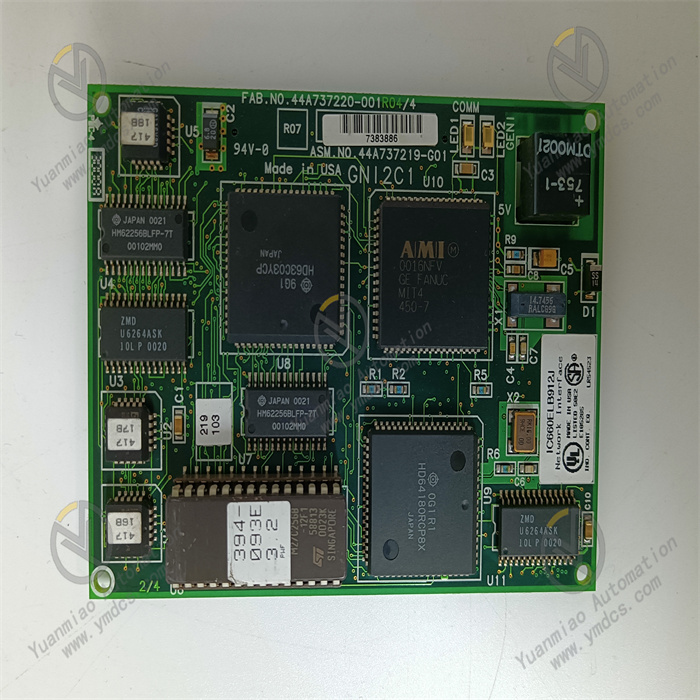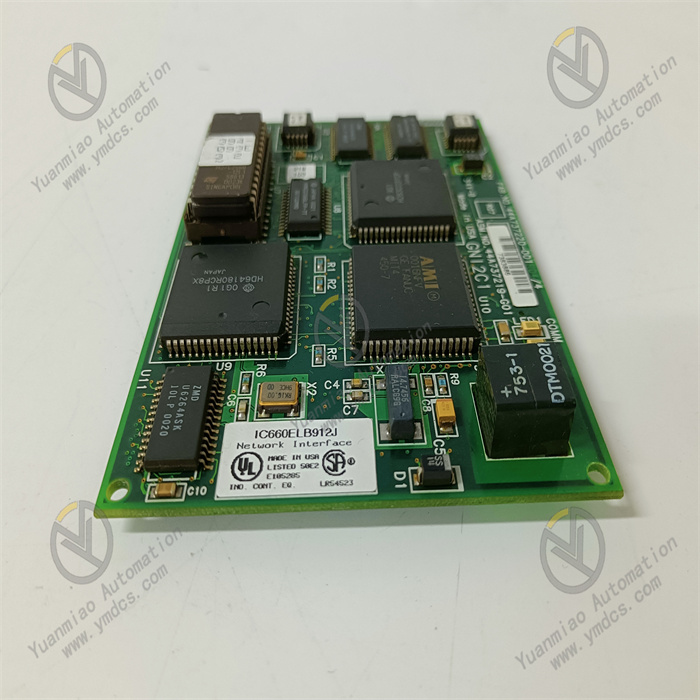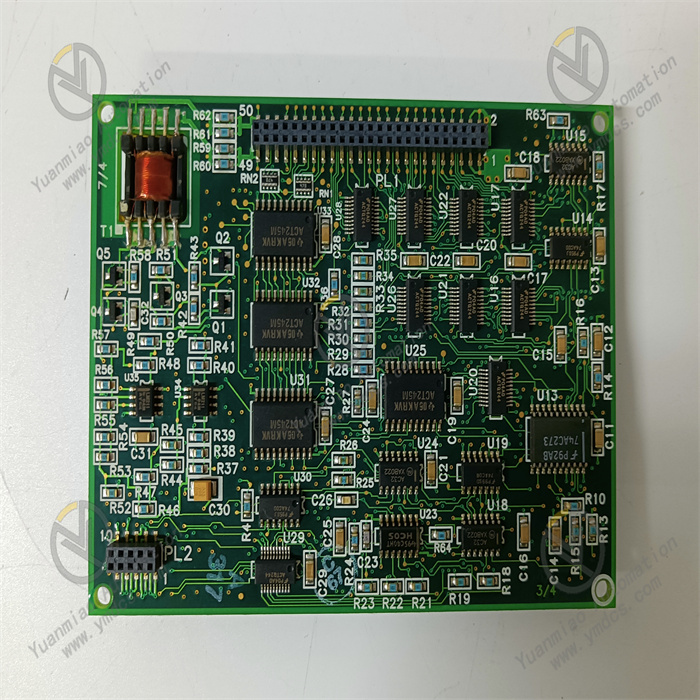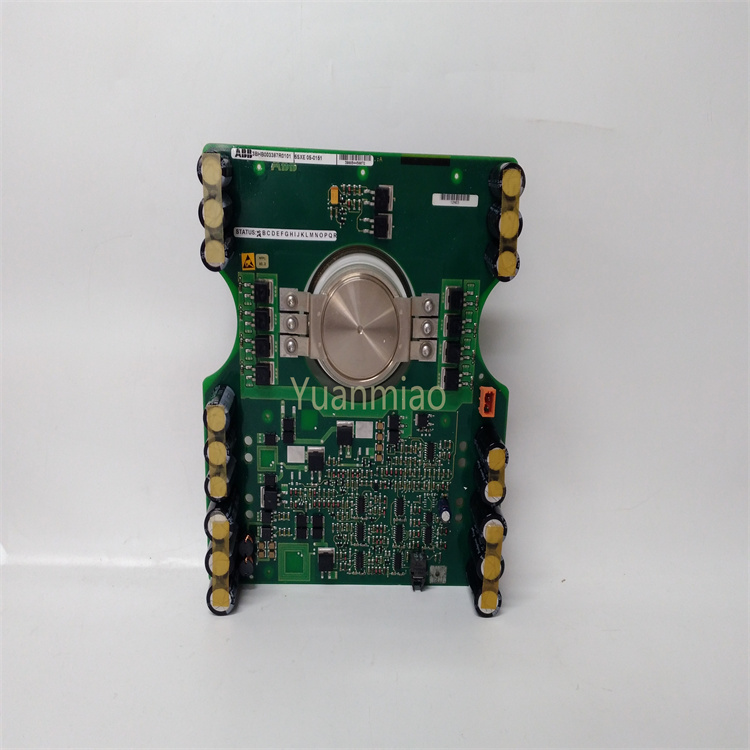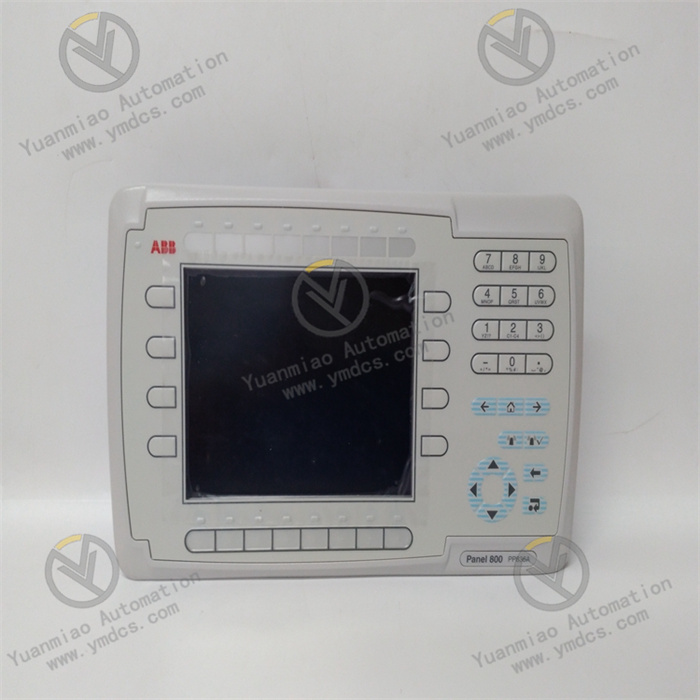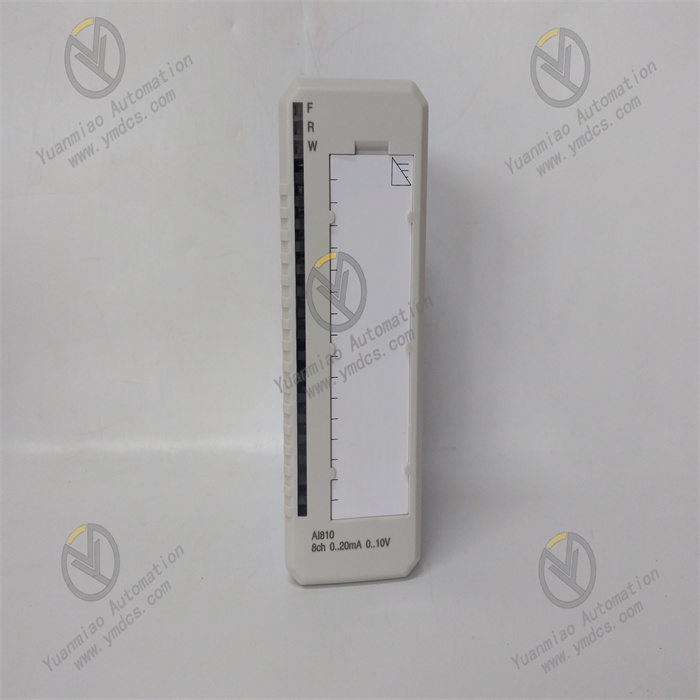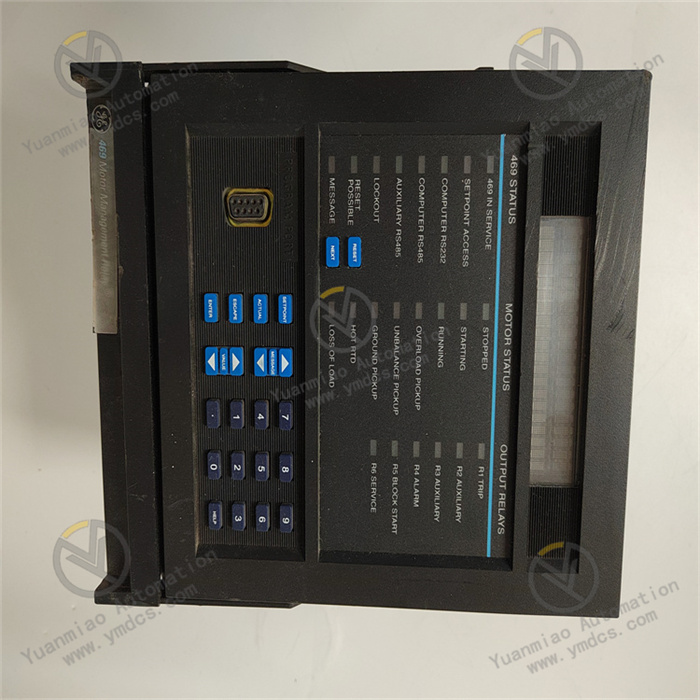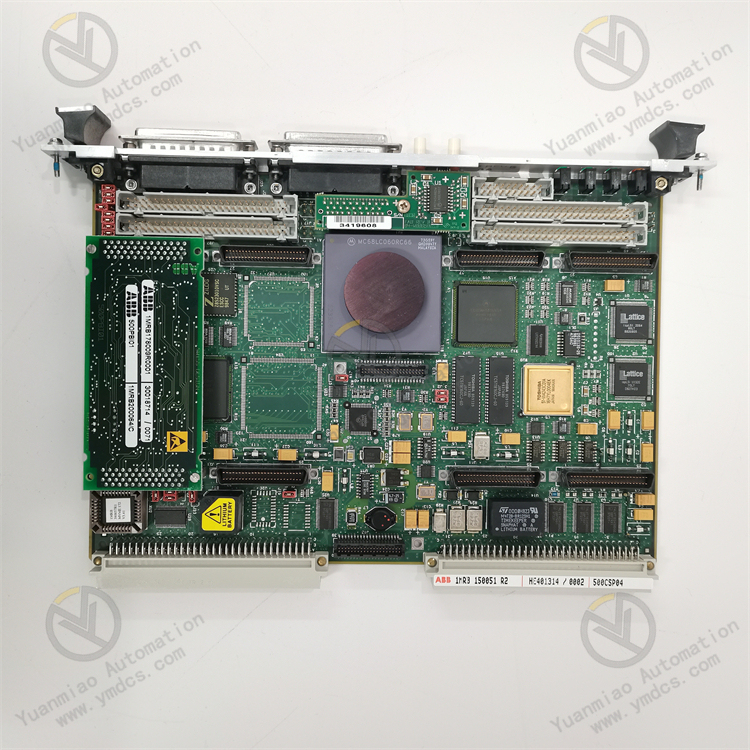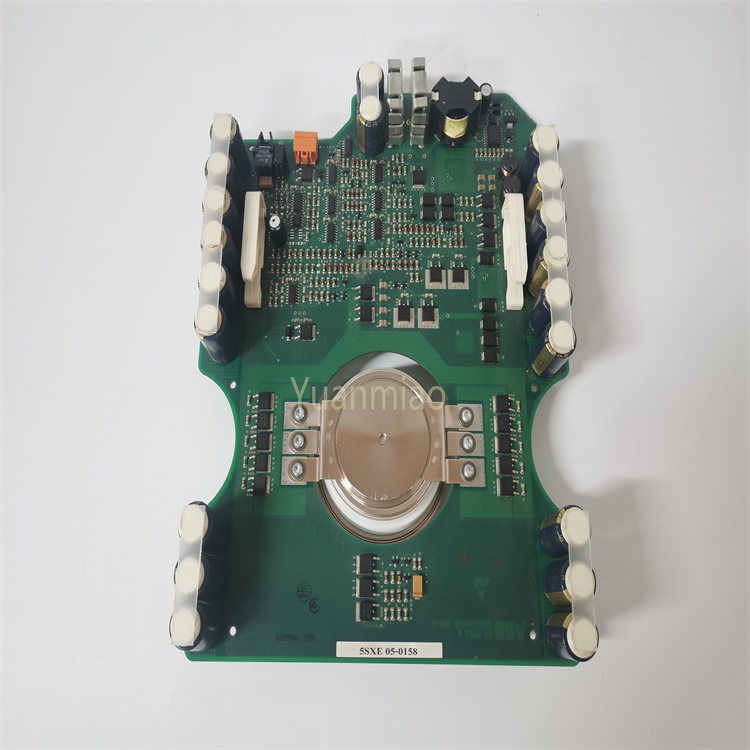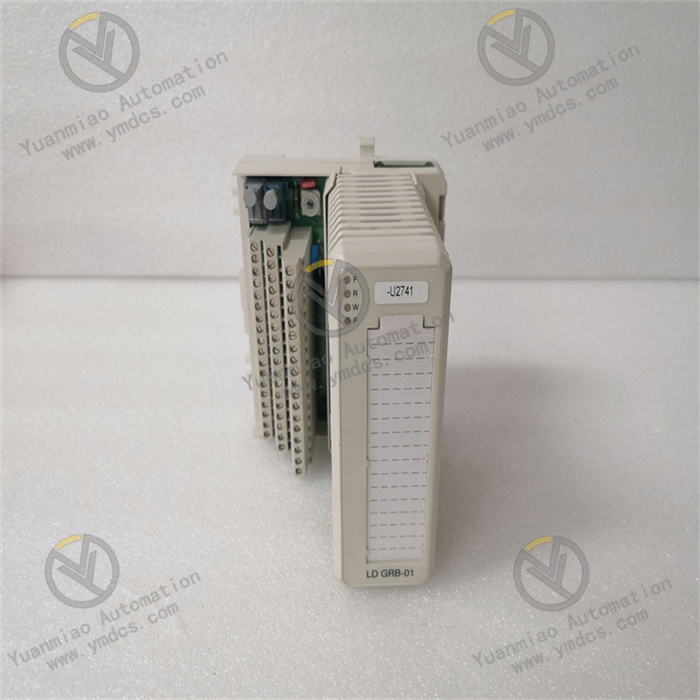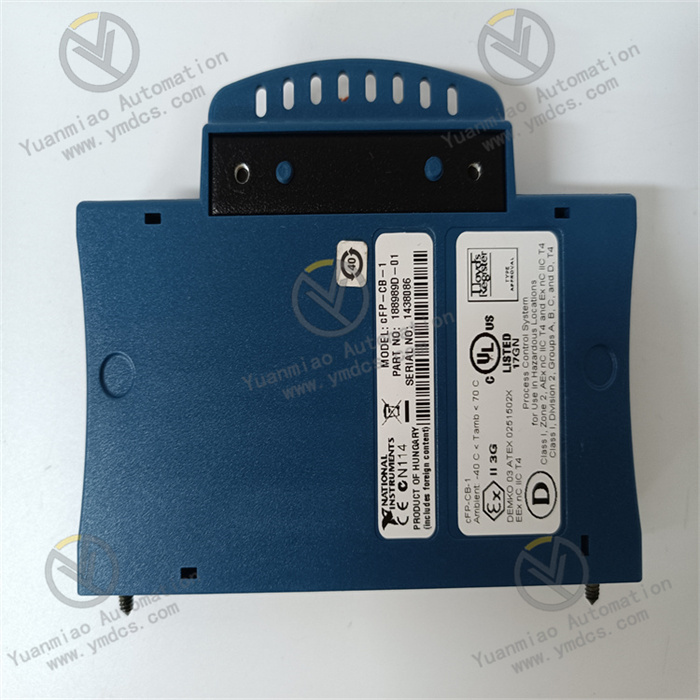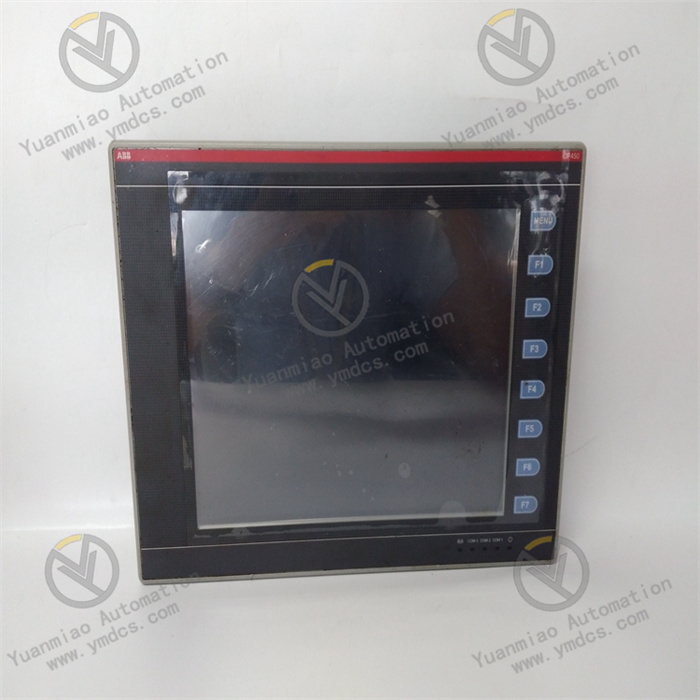Description
GE Fanuc IC660ELB912J
I. Overview
GE Fanuc IC660ELB912J is a high-performance remote I/O communication module specifically designed for industrial distributed control systems. Its core positioning is to serve as a "remote signal interaction bridge", focusing on solving the problem of long-distance data interaction between decentralized equipment (such as sensors and actuators) and central control systems (such as GE Fanuc 90-30/90-70 PLCs) in industrial scenarios. It realizes centralized collection, remote transmission and precise control of on-site I/O signals, supporting the distributed deployment and efficient collaborative operation of large-scale industrial systems.
This module has core advantages of "multi-protocol compatibility + long-distance transmission + strong environmental resistance":
- It supports the Genius I/O bus protocol and is compatible with the full range of GE Fanuc remote I/O modules (such as IC660EBD020 and IC660EBA020), allowing expansion to up to 32 remote I/O slave stations.
- It supports 1.2km transmission without a repeater (using shielded twisted pair), meeting the signal transmission needs across workshops and regions in large factories.
- It is designed with wide temperature adaptability (0℃~+60℃), anti-electromagnetic interference, and oil/dust resistance, enabling stable operation in complex industrial environments such as automobile manufacturing workshops, chemical production units, and power auxiliary control systems.
Compared with ordinary local I/O modules, it has significant advantages in transmission distance and expansion capability. Compared with third-party communication modules, it is natively compatible with GE Fanuc PLCs, requiring no complex protocol conversion and supporting plug-and-play functionality. Thus, it is a key component for building GE Fanuc distributed control systems.
As a core model in the GE Fanuc Genius I/O bus family, the IC660ELB912J is widely used in fields such as automobile manufacturing, chemical engineering, power generation, and food and beverage production. It provides remote I/O signal transmission for scenarios including welding robot workstations, chemical reactor control, and power plant auxiliary equipment monitoring. It is a key piece of equipment for reducing system wiring costs, improving control flexibility, and ensuring the continuity of industrial production.
II. Technical Specifications
(I) Core Communication and Expansion Parameters
| Parameter Category | Specific Specifications |
|---|---|
| Communication Protocol and Bus | Supports the Genius I/O bus protocol. The communication rate is adjustable to 1Mbps (default), 500kbps, or 250kbps. It adopts differential signal transmission for strong anti-interference capability and supports a bus-type topology. |
| Expansion Capability | A single module can act as a Genius bus master station, managing up to 32 remote I/O slave stations (such as digital I/O modules, analog I/O modules, and special function modules). Each slave station supports a maximum of 64 I/O points, and the maximum number of I/O points per bus reaches 2048. |
| Transmission Distance and Medium | Supports transmission via shielded twisted pair (STP) with a maximum distance of 1.2km without a repeater. It supports fiber optic medium expansion (requires matching GE Fanuc fiber optic transceivers) with a transmission distance of up to 10km. The maximum distance between bus nodes is 300m (without a repeater). |
| Signal Type and Interface | Provides 1 Genius bus interface (DB9 female connector) supporting differential signal input/output. Equipped with 2 power supply interfaces (24V DC) to power the module itself and the bus driver respectively. |
(II) Electrical and Power Supply Parameters
- Power Supply Requirements: The module operates at 24V DC (with a wide adaptation range of 20.4V DC~26.4V DC). The module's own power consumption is ≤5W, and the power consumption of the bus driver circuit is ≤10W (when fully loaded with 32 slave stations). It supports reverse power connection protection (no damage under reverse voltage ≤30V DC) and has built-in overcurrent protection (current limiting triggered when the current exceeds 1.5A).
- Electrical Isolation: The Genius bus interface and the module's internal circuit are optically isolated (isolation voltage ≥2500Vrms). The power supply circuit and I/O signal circuit have double isolation to avoid ground loop interference and external voltage intrusion, protecting the central control system.
- Signal Level: The Genius bus uses differential signals with a level of ±5V. The amplitude of a logic "1" signal is ≥2.5V, and the amplitude of a logic "0" signal is ≤0.5V, ensuring no signal distortion during long-distance transmission.
(III) Performance and Compatibility Parameters
- Data Transmission Performance: At a rate of 1Mbps, the data update cycle for a single slave station is ≤1ms. When 32 slave stations are fully loaded, the bus cycle is ≤50ms, meeting the requirements of industrial real-time control (such as motor start/stop and valve adjustment). It supports two data acquisition modes: "polling" and "interrupt". In interrupt mode, the response time for abnormal signals from slave stations is ≤100μs.
- System Compatibility: Compatible with GE Fanuc 90-30 PLCs (requires matching CPU modules such as IC693CPU374) and 90-70 PLCs (requires matching CPU modules such as IC697CPU771). It supports GE Fanuc CIMPLICITY HMI software for real-time monitoring of bus status and I/O data. It is also compatible with third-party SCADA systems (such as Wonderware Intouch) and enables data interaction via the OPC protocol.
- Diagnostic Function: Built-in bus fault diagnosis (for issues such as slave station offline, cable short circuit, and signal attenuation) and supports error code output (e.g., E01 = bus short circuit, E02 = slave station no response). The module panel is equipped with LED indicators (power, bus operation, fault) for intuitive display of the working status.
(IV) Environmental and Certification Parameters
- Operating Environment: The operating temperature range is 0℃~+60℃, suitable for normal industrial scenarios (such as workshops and control rooms). The storage temperature range is -40℃~+85℃, and the humidity range is 5%~95% (no condensation, complying with the IEC 60068-2-3 standard).
- Vibration and Shock Resistance: It has a vibration resistance rating of 5g (10Hz~500Hz, complying with IEC 60068-2-6) and a shock resistance rating of 20g (11ms pulse, complying with IEC 60068-2-27), adapting to vibrations from workshop equipment and shocks during installation and maintenance.
III. Functional Features
(I) Multi-Protocol Compatibility and Flexible Expansion for Distributed Systems
The GE Fanuc IC660ELB912J builds a flexible distributed I/O network with the "Genius bus core + multi-slave station expansion" as its foundation:
- Native Genius Bus Compatibility: It is deeply integrated into the GE Fanuc distributed ecosystem and works seamlessly with 90-30/90-70 PLCs. For example, in an automobile welding workshop, a 90-30 PLC (IC693CPU374) uses the IC660ELB912J module to manage 16 remote I/O slave stations (IC660EBD020 digital input modules), collecting "emergency stop signals" and "welding completion signals" from 32 welding robots. The data update cycle is ≤20ms, ensuring the PLC grasps the robots' working status in real time.
- Large-Scale Expansion with 32 Slave Stations: A single module can manage up to 32 slave stations, covering the needs of multiple areas in large factories. For instance, in a chemical industrial park, one IC660ELB912J module acts as the master station, connecting 32 slave stations (distributed across 5 production workshops) via the Genius bus. It collects 1024 I/O signals such as "reactor temperature", "valve opening", and "pump operation status", eliminating the need for a separate PLC in each area and reducing system costs.
- Adaptability to Multiple Signal Types: It is compatible with slave stations for digital signals (switch signals), analog signals (sensor parameters), and special functions (counters, encoders). For example, in a food and beverage filling line, the master station connects 8 digital slave stations (collecting filling valve status), 4 analog slave stations (collecting liquid level and flow rate), and 2 encoder slave stations (collecting conveyor belt speed), enabling centralized management of multiple signal types and simplifying the system architecture.
(II) Stable Long-Distance Transmission to Break Spatial Limitations
The module achieves reliable long-distance communication through differential transmission and signal optimization:
- 1.2km Transmission Without Repeater: The shielded twisted pair enables transmission up to 1.2km without a repeater, suitable for cross-workshop scenarios. For example, in a large steel mill, the steel rolling workshop (where the master station is located) and the heat treatment workshop (1km away) are connected via the Genius bus. The IC660ELB912J master station collects "furnace temperature" and "steel strip tension" signals from 20 slave stations in the heat treatment workshop. During transmission, the signal attenuation is ≤5% and the data error is ≤0.1%, ensuring coordination between the steel rolling and heat treatment processes.
- Ultra-Long-Distance Expansion with Fiber Optics: When matched with fiber optic transceivers, the transmission distance can be extended to 10km, suitable for cross-plant scenarios. For example, in a chemical industrial park, Plant A (master station) and Plant B (8km away) are connected via optical fibers. The master station collects "tank liquid level" and "pipeline pressure" signals from 16 slave stations in Plant B in real time. Fiber optic transmission is resistant to electromagnetic interference (due to many high-voltage devices in the plants), with a bit error rate ≤10⁻¹², ensuring stable cross-plant data interaction.
- Anti-Interference of Differential Signals: The Genius bus uses differential signal transmission with a common-mode rejection ratio (CMRR) ≥80dB (at 50Hz) to resist industrial electromagnetic interference. For example, in an automobile painting workshop (with high-power frequency converters and electromagnetic radiation of 10V/m), the "painting valve control signals" transmitted via the bus have no false triggers, and the fluctuation of the slave station response time is ≤100μs, ensuring the precise execution of the painting process.
(III) Industrial-Grade Protection Design for Complex On-Site Conditions
In response to harsh conditions in industrial scenarios, the module enhances protection for hardware durability:
- Wide Temperature and Environmental Adaptability: The operating temperature range of 0℃~+60℃ covers most industrial scenarios. For example, in a southern automobile workshop in summer (ambient temperature 55℃), the module operates for a long time without performance degradation, and the bus cycle is stably maintained at 30ms. In a power plant auxiliary control room in northern winter (ambient temperature 5℃), the module can start without preheating, and the slave station recognition time is ≤2s.
- Vibration and Shock Resistance: The 5g vibration resistance rating adapts to vibrations from workshop equipment. For example, in a machine tool processing workshop (with vibrations of 3g, 10Hz~300Hz), the module is installed in a control cabinet, ensuring uninterrupted communication with slave stations and no abnormal fluctuations in I/O data. After withstanding a 20g shock (such as tool collision) during installation and maintenance, the module circuit remains undamaged and can work normally.
- Oil and Dust Resistance: The housing is made of ABS flame-retardant material with an IP20 protection rating (when used with a control cabinet with IP54 rating), resisting pollutants in the workshop. For example, in a mechanical processing workshop (with much oil and metal dust), the module operates for a long time without terminal oxidation, and the bus interface contact resistance is ≤50mΩ, ensuring stable signal transmission. The cable connector adopts a waterproof design, preventing water ingress in humid environments during the rainy season.
(IV) Intelligent Diagnosis and Convenient Operation & Maintenance to Reduce Management Costs
The module simplifies the operation and maintenance process through fault diagnosis and status monitoring:
- Real-Time Fault Diagnosis: Built-in bus fault detection supports error code output and LED indication. For example, when a slave station goes offline, the "fault light" on the module panel flashes and outputs the error code "E02". After the PLC reads the code through a program, it displays "Slave Station 15 Offline" on the HMI, allowing maintenance personnel to quickly locate the fault point and reducing maintenance time by 50%.
- Remote Status Monitoring: It supports remote monitoring of the bus status via CIMPLICITY HMI. For example, maintenance personnel can check the "bus rate (1Mbps)", "number of online slave stations (28/32)", and "data update cycle (35ms)" on the HMI in the central control room without on-site inspection, grasping the system operation status in real time.
- Hot-Swapping and Rapid Recovery: Some slave stations support hot-swapping (requires module configuration), allowing fault replacement without shutdown. For example, in chemical reactor control, if an analog slave station (collecting reactor temperature) fails, maintenance personnel can hot-swap and replace the slave station. The module automatically recognizes the new slave station and resumes data transmission, with an interruption time ≤1s, without affecting the normal operation of the reactor.


